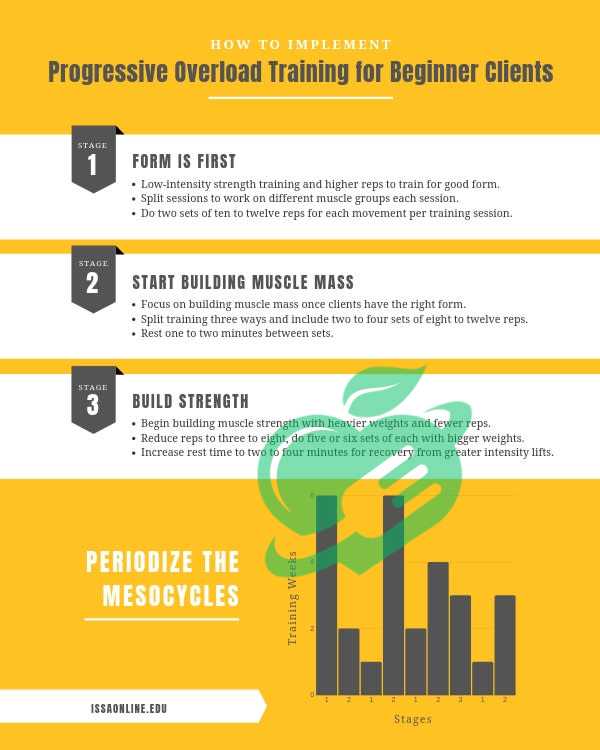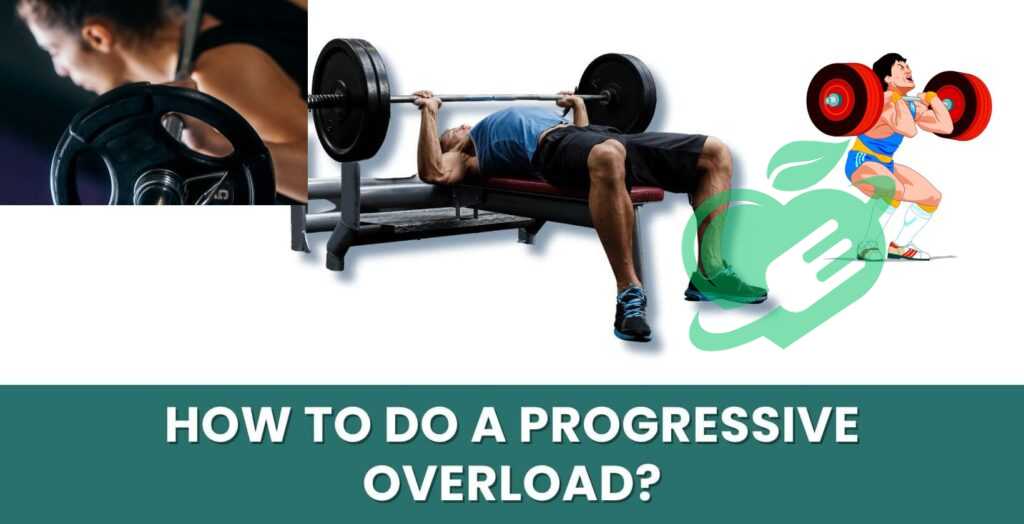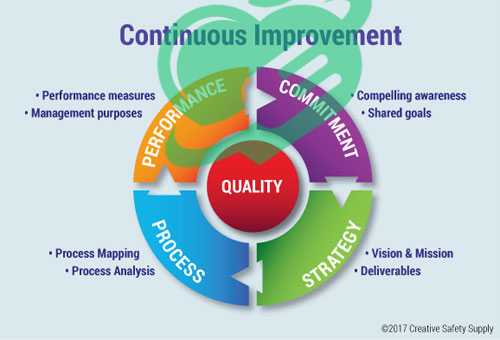
Definition of Progressive Overload
Progressive overload is a fundamental training principle that emphasizes the need to increase the demands placed on the body during workouts systematically. To grow stronger, gain size, or improve fitness levels, individuals must push their physical limits gradually. This can be achieved through various methods, such as:
- Increasing weights: Lifting heavier weights over time.
- Enhancing repetitions: Adding more reps to the exercise.
- Adjusting volume: Increase the total sets or workout duration.
- Altering intensity: Modifying the tempo or rest intervals between sets.
An effective example of this principle in action could be seen in the experience of a beginner who starts with lightweight dumbbells and, over a few weeks, steadily increases the weights. This steady challenge keeps the muscles adapting and growing.
History and Evolution
The concept of progressive overload isn’t new; it dates back to the early 20th century when strength training was becoming more popular in athletic and military circles. This principle has evolved through decades of research and practice in fields such as exercise science and physical therapy. Some key milestones in the evolution of progressive overload include the following:
- 1940s – 1950s: Pioneers like Thomas DeLorme introduced systematic weight training protocols that laid the groundwork for modern strength training methodologies.
- 1960s – 1980s: The development of more sophisticated training programs, emphasizing periodization, became prevalent.
- 2000s onward: Technology and fitness tracking have refined how individuals monitor their progress and adapt their training effectively.
Understanding these historical contexts helps enthusiasts appreciate the scientific foundation of progressive overload and encourages them to incorporate its principles into their workouts responsibly. Embracing this knowledge not only optimizes physical performance but also fosters a lifelong commitment to health and fitness.
Read also: Weight Lifting Women: Lift Heavy, Look Amazing.

The Science Behind Progressive Overload
Muscle Adaptation and Growth
At the heart of progressive overload lies the concept of muscle adaptation. When muscles are subjected to stress—whether through lifting weights, running sprints, or performing high-intensity intervals—they respond by undergoing physiological changes. This adaptation occurs through several mechanisms:
- Microtears: During strenuous activity, tiny tears occur in muscle fibers. The body then works to repair these tears, which ultimately leads to thicker, stronger muscles.
- Protein synthesis: Following exercise, the rate of protein synthesis in muscles increases, contributing to muscle growth (hypertrophy).
- Neurological adaptations: Over time, the nervous system becomes better at recruiting muscle fibers, improving strength and coordination.
For example, someone beginning a resistance training program may start with basic bodyweight exercises. As they progress and incorporate heavier weights, their muscles learn to adapt, resulting in noticeable gains in strength and endurance.
Importance of Intensity and Volume
Achieving the right balance of intensity and volume is crucial when implementing progressive overload effectively. Both factors significantly influence muscle adaptation and growth:
- Intensity: Refers to the difficulty of the exercise, often measured by the weight lifted relative to maximum capacity. Higher intensity requires the body to work harder, which stimulates adaptation.
- Volume denotes the total amount of work done, typically calculated by multiplying the number of sets, reps, and weight. Increasing volume can also promote muscle fatigue and initiate growth.
A smart approach could be structured as follows:
- Start with manageable weights: Gauge your current capacity.
- Gradually increase weights or reps each week: This builds intensity.
- Mix up your routines: Incorporate different exercises to vary volume.
Understanding and applying these elements ensures that individuals consistently challenge their muscles and reap the benefits of progressive overload, fostering long-term fitness growth and resilience.

Tracking Progress and Setting Goals
To maximize the benefits of progressive overload, tracking progress and setting clear goals are essential. Whether you’re a seasoned athlete or just starting, monitoring your progress can provide valuable insights and motivation. Here are some effective strategies for tracking:
- Workout Journal: Keep a detailed log of your workouts, noting reps, sets, and weights used. This helps to visualize progress over time.
- Apps and Technology: Utilize fitness apps to track progress. Many apps allow users to record workouts, set goals, and analyze performance trends.
- Regular Assessments: Periodically assess your strength or endurance levels, such as max lifting tests or fitness benchmarks. This provides a tangible measure of improvement.
Setting SMART (Specific, Measurable, Achievable, Relevant, Time-bound) goals can also significantly boost motivation. For example, aiming to increase your squat weight by 10 pounds over six weeks provides a clear and concise target.
Avoiding Plateaus and Overtraining
While progressive overload can lead to significant gains, it also poses the risk of encountering plateaus or overtraining if not managed wisely. To avoid these pitfalls, consider these tactics:
- Change Up Your Routine: Incorporate different exercises, change rep ranges, or alter your rest intervals periodically to keep workouts fresh and challenging.
- Listen to Your Body: Recognize signs of fatigue, such as excessive soreness or decreased performance. Adjust workouts accordingly to prevent burnout.
- Prioritize Recovery: Recovery days are crucial for muscle repair and growth. Ensure adequate rest periods between intense workouts to allow your body to recover fully.
For instance, if an individual finds that they are no longer able to lift heavier weights after consistently training for several weeks, it may be time to rotate exercises or increase recovery time. Balancing challenge and recovery makes for sustainable growth, keeping both motivation and results high.

Progressive Overload Techniques
Increasing Resistance
One of the most straightforward and effective methods of achieving progressive overload is by increasing the resistance you use during workouts. As muscles adapt to existing weights, the need to elevate the load becomes crucial for continued growth. Here are some practical ways to increase resistance:
- Weight Gradation: Many gyms offer a variety of weights or resistance bands. Incrementally increase your weights by 2.5 to 5 pounds, especially after performing a set comfortably for multiple sessions.
- Utilize Advanced Equipment: If you’re exploring alternative equipment like kettlebells or resistance bands, you can switch to heavier options as you progress.
- Implement Compound Movements: Exercises that work multiple muscle groups (like squats and deadlifts) allow you to lift heavier weights and maximize muscle fiber recruitment.
For instance, a beginner might start with 20-pound dumbbells for chest presses. Once they easily complete their sets, stepping up to 25-pound dumbbells can keep their muscles stimulated.
Read also: Top 10 Uses of Magnesium Oil for a Healthier You
Manipulating Repetitions and Sets
Another effective progressive overload technique involves manipulating the number of repetitions and sets performed during workouts. This approach enhances muscle endurance and strength without always adding weight. Here’s how to approach it:
- Increase Reps: Once a weight feels manageable, try adding more repetitions to each set. For example, if you typically do 10 reps, challenge yourself to complete 12 or 15.
- Adjust Sets: Alternatively, increase the number of sets you perform. Transitioning from three to four sets of an exercise can elevate the overall workout volume significantly.
- Pyramid Sets: Consider using pyramid training, where you gradually increase the weight while decreasing the reps or vice versa during the workout. This technique can continuously shock the muscles.
By creatively increasing resistance and manipulating repetitions and sets, individuals can maintain their momentum in training, avoiding stagnation and promoting consistent progress on their fitness journey.
Read also: Best Tips for Crushing It on the Running Track.

Benefits of Progressive Overload
One of the most significant benefits of implementing progressive overload is the enhancement of strength and muscular endurance. As individuals progressively challenge their muscles, they not only increase their strength but also improve their ability to sustain physical activity over longer durations. Here’s how progressive overload contributes to these enhancements:
- Increased Muscle Fiber Recruitment: Higher resistance training leads to more muscle fibers being activated, resulting in stronger and more efficient muscles.
- Improved Energy System Efficiency: As you push your limits, your body learns to utilize energy more effectively, increasing stamina for prolonged exercises.
- Functional Strength: Regularly adapting your training helps prepare you better for daily activities, making everyday tasks feel easier.
For example, someone who regularly lifts weights using progressive overload might find that simple tasks like carrying groceries become less burdensome as their overall strength improves.
Preventing Workout Plateaus
Another promising advantage of progressive overload is its role in preventing workout plateaus. Everyone experiences those frustrating moments when progress seems to stall, leading to decreased motivation. Here’s how progressive overload combats this issue:
- Continuous Challenge: By consistently increasing intensity or volume, the body is continually pushed to adapt, preventing stagnation.
- Variety in Training: Altering set structures, resistance levels, or exercise choices helps maintain engagement and enthusiasm during workouts while encouraging further progress.
- Reinforced Mental Resilience: Overcoming the challenges of progressive overload can foster a growth mindset, making individuals more resilient to obstacles they encounter in their fitness journeys.
Imagine a case where a person hits a plateau in their jogging routine. By gradually increasing their speed or distance every week, they can push through the stagnation, enhancing stamina and performance. Embracing these benefits of progressive overload ultimately leads to more effective and satisfying fitness experiences, ensuring continual progress towards personal goals.
Read also: Unveiling the 75 Soft Challenge: Everything You Need to Know.

Common Mistakes to Avoid
Ignoring Proper Form and Technique
One of the most common mistakes individuals make when trying to implement progressive overload is neglecting proper form and technique. It’s easy to get caught up in the excitement of lifting heavier weights or completing more repetitions, but compromising form can lead to injuries and hinder overall progress. Here are some critical points to consider:
- Prioritize Quality over Quantity: Always focus on performing each rep correctly rather than chasing a heavier weight. For instance, if you can only perform five excellent push-ups, it’s better than doing ten with poor form.
- Listen to Your Body: Pay attention to any discomfort or pain during exercise. If something feels off, it’s essential to pause and reassess your technique.
- Get Feedback: Don’t hesitate to ask trainers or experienced gym-goers for tips on your form. A quick adjustment can make a world of difference.
When people overlook technique, they not only risk injuries but also risk missing out on the full benefits of their workouts, leading to wasted effort.
Neglecting Recovery and Rest Days
Another pitfall in the pursuit of progressive overload is neglecting recovery and rest days. While the drive to push harder is admirable, rest is a crucial component of any training program. Here’s why:
- Muscle Repair: During rest, the body repairs muscle fibers that were damaged during workouts, leading to strength gains.
- Prevention of Overtraining: Ignoring rest can lead to fatigue, burnout, and even injuries, all of which can sideline your progress.
- Mental Recharge: Taking breaks helps keep motivation and enthusiasm high, preventing the workouts from feeling monotonous.
Consider this: An avid lifter might decide to skip rest days to make a more significant push towards their goals. However, they soon find themselves feeling fatigued and sluggish, resulting in subpar workouts. By consciously avoiding these common mistakes, individuals can create a safer and more effective training environment, setting themselves up for lasting success in their fitness journey.
Read also: Exploring the Health Benefits of Sauerkraut: A Superfood for Gut Health.

Progressive Overload Beyond Weight Training
Applying Principles in Cardiovascular Fitness
Progressive overload isn’t limited to weight training; its principles can significantly enhance cardiovascular fitness as well. Many people think that only lifting heavier weights can lead to improvement, but cardiovascular workouts benefit just as much from gradual challenges. Here’s how to apply these principles:
- Increase Duration: Start by jogging for 20 minutes. Once comfortable, increase your time gradually. Try adding an extra 5 minutes each week to elevate your endurance.
- Boost Intensity: Introduce interval training into your routine. For example, alternate between sprinting for 30 seconds and jogging for 2 minutes. This approach not only keeps the heart rate up but also encourages adaptation.
- Varying Workouts: Switching up activities—like cycling, swimming, or dancing—can also stimulate different muscle groups while introducing new challenges.
Personally, when I began running, I started with short, slow sessions. Over time, by gradually increasing my pace and distance, I not only built my endurance but also learned to enjoy my runs.
Incorporating Progressive Overload in Skill Development
Beyond physical fitness, progressive overload can be applied to improve various skills, whether in sports, music, or even cognitive tasks. Growth in any field involves stepping out of one’s comfort zone and challenging oneself progressively. Consider the following:
- Incremental Challenges: For athletes, performing drills with increased complexity—such as adding more variables to a passing drill in soccer—promotes skill refinement.
- Mastery with Complexity: Musicians can progress by gradually increasing the tempo of a piece or introducing more challenging pieces as they improve.
- Mental Stimulation: Cognitive skills, like language learning, can be enhanced by gradually increasing difficulty, such as learning more complex vocabulary or grammar rules.
For example, a beginner pianist might start with simple scales, progressing to more complicated pieces as confidence and skill level rise. This steady progression not only sharpens their skills but also keeps the learning process enjoyable. By applying the principles of progressive overload across various disciplines, individuals can foster ongoing growth and mastery in their pursuits, leading to fulfillment and achievement in their interests.
Read also: Understanding the Importance of Mental Health First Aid.

Progressive Overload for Long-Term Success
Periodization and Variation
To sustain the momentum gained through progressive overload, it’s crucial to incorporate periodization and variation into your fitness regimen. Periodization refers to the systematic planning of training phases, while variation involves changing training stimuli to avoid stagnation. Here’s how to implement these concepts effectively:
- Structured Training Phases: Break your training into distinct phases that focus on different goals, such as strength building, endurance, or hypertrophy. For instance, a typical schedule might include 4 weeks of focusing on heavy lifting followed by a week centered on lighter weights and higher reps.
- Introduce Variety: Changing exercises or routines can prevent boredom and continuously challenge your muscles. For example, if you’re used to squats, you might switch to lunges or leg presses for a few weeks.
- Deload Weeks: Incorporating a “deload” week—where you reduce workout intensity or volume—allows your body to recover fully while maintaining the benefits of previous training.
After applying periodization last year, I noticed significant improvements in my strength and endurance. Shifting my focus every few weeks kept me engaged and eager to progress.
Consistency and Patience
While the principles of progressive overload are vital, the greatest factors in long-term success remain consistency and patience. Remember, fitness is a marathon, not a sprint. Here are ways to embed these values into your training:
- Daily Commitment: Develop a sustainable routine. Set achievable, regular workout schedules that incorporate progressive challenges without overwhelming yourself.
- Celebrate Small Wins: Track your progress and acknowledge milestones, whether it’s lifting a new weight or completing an extra mile. Each of these achievements builds toward larger goals.
- Stay Motivated: Surround yourself with supportive individuals who share similar goals. This communal support can boost endurance and accountability.
In practicing consistency and patience, results will compound over time, leading to lasting success. Embracing these qualities fosters a mindset equipped to navigate challenges, ensuring you remain committed to your fitness journey and goals.
Read also: Life After Open Heart Surgery: Tips for a Smooth Recovery.

Recap of Progressive Overload Benefits
As we wrap up our exploration of progressive overload, it’s clear that this fundamental principle is key to achieving and maintaining growth in both strength training and various fitness pursuits. The benefits of progressive overload include:
- Enhanced Strength and Muscular Endurance: By continually challenging your muscles, you become stronger and more capable of enduring physical activity longer.
- Prevention of Workout Plateaus: Regularly increasing intensity or volume keeps your workouts engaging and effective, circumventing stagnation.
- Application Beyond Weight Training: Whether in cardiovascular fitness or skill development, the principles of progressive overload can be flexibly applied for continuous improvement.
For example, I recall the satisfaction of breaking through a plateau in my running speed by gradually increasing my interval training.
Final Thoughts on Continuous Improvement
Adopting progressive overload requires dedication, but the rewards are well worth the effort. Continuous improvement is not only about pushing limits but also about being mindful of recovery, technique, and maintaining variety in your workouts. Here’s a quick checklist to guide your fitness journey:
- Set Realistic Goals: Use the SMART criteria to anchor your objectives while maintaining flexibility to adapt as you progress.
- Embrace the Process: Recognize that progress takes time, and celebrate each small victory along the way.
- Seek Support: Find a workout buddy or community to encourage accountability and share experiences.
Frequently Asked Questions
What is the 2 for 2 rule for progressive overload?
The “2-for-2 rule” states that you can raise the weight once you can complete 2 extra repetitions beyond your target for the last set for two consecutive weeks. This guideline helps determine the right moment to begin increasing the load in your training. 1
How fast should I progress to overload?
How many reps for progressive overload?
Although everyone is unique, a helpful guideline is to increase your workout intensity by 10% each week to prevent injuries. For instance, this could mean increasing your repetitions from 10 to 11 or your weight from 20kg to 22kg. It’s best to avoid making several changes at once, as this could put too much strain on your body and lead to injury. Pay attention to how your body feels. 2
How long to rest between sets?
To enhance strength and power, take a 3 to 5-minute break between sets. For hypertrophy training aimed at muscle growth, resting for 30 to 60 seconds is recommended. If your goal is to improve muscular endurance, aim for rest periods of 20 to 60 seconds. 3
Do muscles grow on rest days?
“Muscle growth occurs during its ‘repair phase,’ which takes place while you’re resting and replenishing,” explains Jordane. Each time you exercise, you cause tiny tears in your muscle fibers. During rest, your muscles begin to recover and become stronger, allowing you to perform the same workout with greater ease in the future. 4
Follow us for more updates and breaking news, as we provide you with everything new.
- Reference
- gymaware((↩))
- puregym ((↩))
- runnersworld ((↩))
- thebodycoach ((↩))



